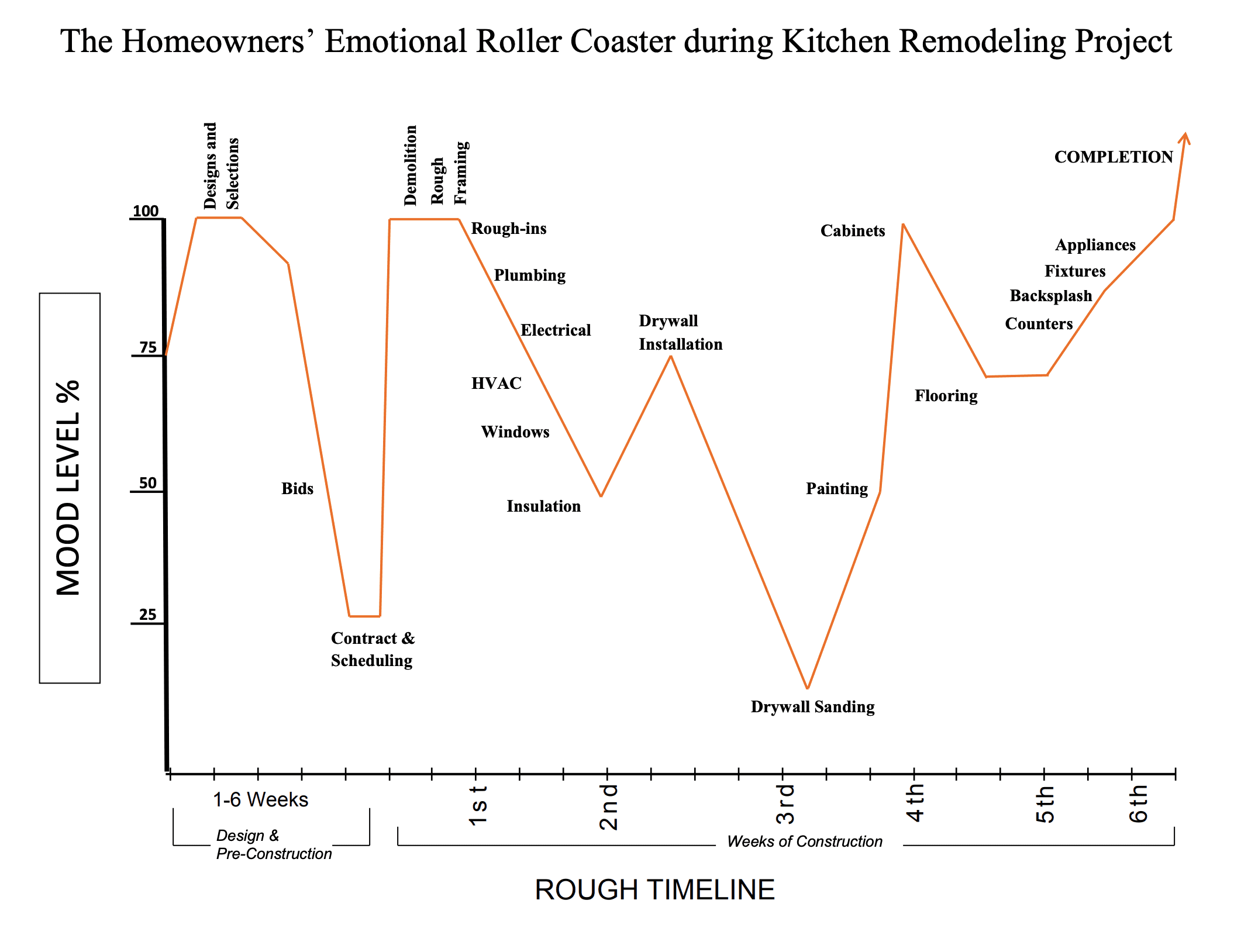
Remodeling your home isn’t just a physical transformation—It’s an emotional roller coaster. Whether you’re updating a kitchen, bathroom, fireplace, or tackling a full-home renovation, the process if a big deal. We hear from homeowners all the time that their remodel is years in the making carefully choosing designers, contractors, and materials to make sure every detail is just right.
However, homeowners often underestimate just how emotional of a journey it can be. At first, excitement is high as you design your dream space, but once construction begins, the reality of delays, long lead times, dust, and disruptions to your daily life start to take a toll. Just when you’re at the peak of frustration, you start to see visible progress with brings renewed hope and energy. As the finishing touches come together, anticipation builds, and you can’t wait to start living in your new space!
By understanding the highs and lows in advance, you can better prepare yourself for navigating your remodel and stay focused on the end result.
Phase 1 – Design & Pre-Construction
It’s Finally Happening!
This is one of the most exciting parts of the process! You’re full of ideas and dreams, scrolling through Pinterest, making mood boards (click here to find out how to make your own!), visiting showrooms, and picking out countertops, cabinets, and fixtures. Everything is starting to feel real! Keep in mind that flexibility is key—sometimes, adjustments are needed based on budget and feasibility.
The excitement might take a dip when you start requesting bids. Be prepared for a reality check when you start receiving the estimates. Oftentimes, Bids from contractors may bring some sticker shock, and adjustments might be needed to balance design dreams with budget realities. Check out “What to Expect When Hiring a Contractor” for more information.
The last part of this phase is finalizing the contract and scheduling your project. At this point, you might be realizing just how long your project is going to take and it might be longer than you were initially expecting. Working with a reliable contractor who is fully transparent and sets realistic expectations is super important!
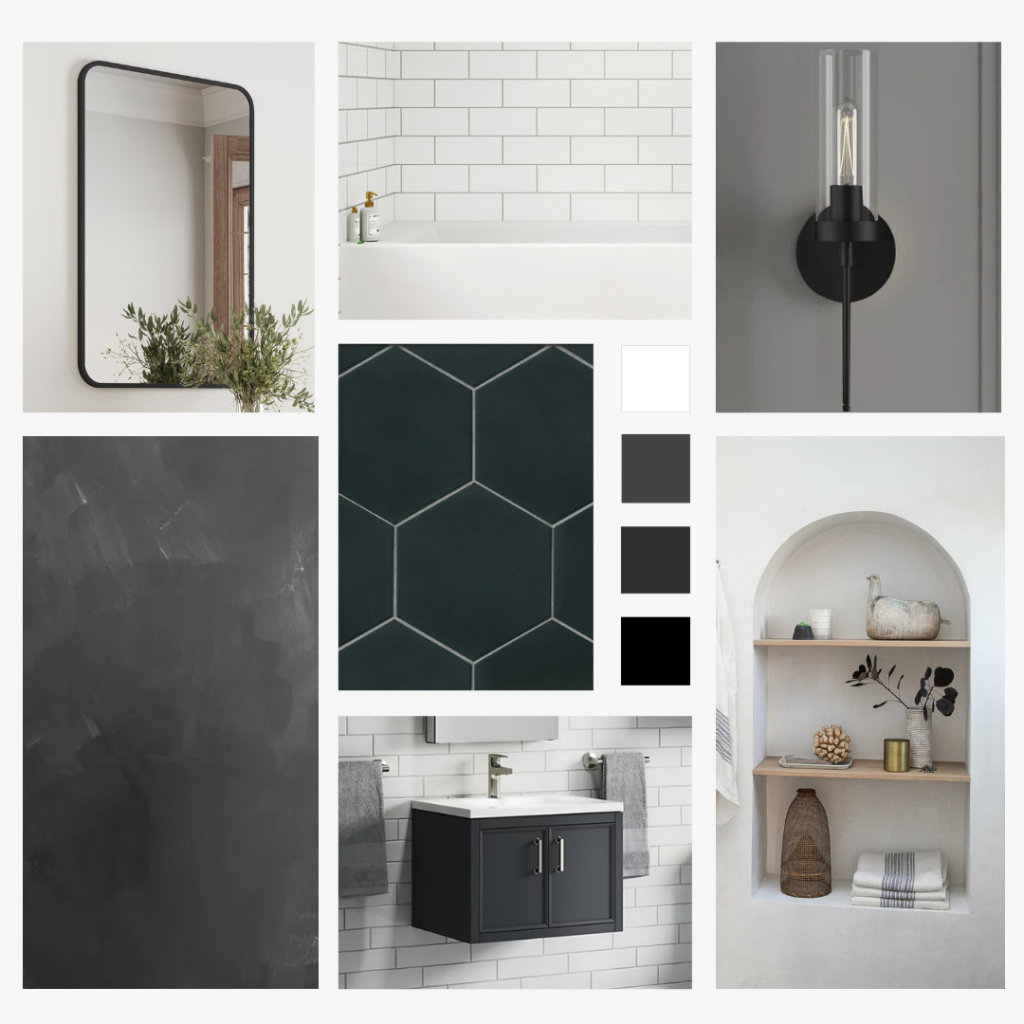
Phase 2 – Early Construction
When Reality Hits
The fun (and chaos) begins! Demolition day marks the official kickoff of your remodeling project, and it’s a thrilling yet nerve-wracking time. There’s something oddly satisfying about watching those old walls come down and knowing that you’re making way for something fresh and new. Flooring is ripped up, outdated fixtures are hauled away, and that kitchen or bathroom you’ve been dreaming about is finally starting to take shape—at least in theory!
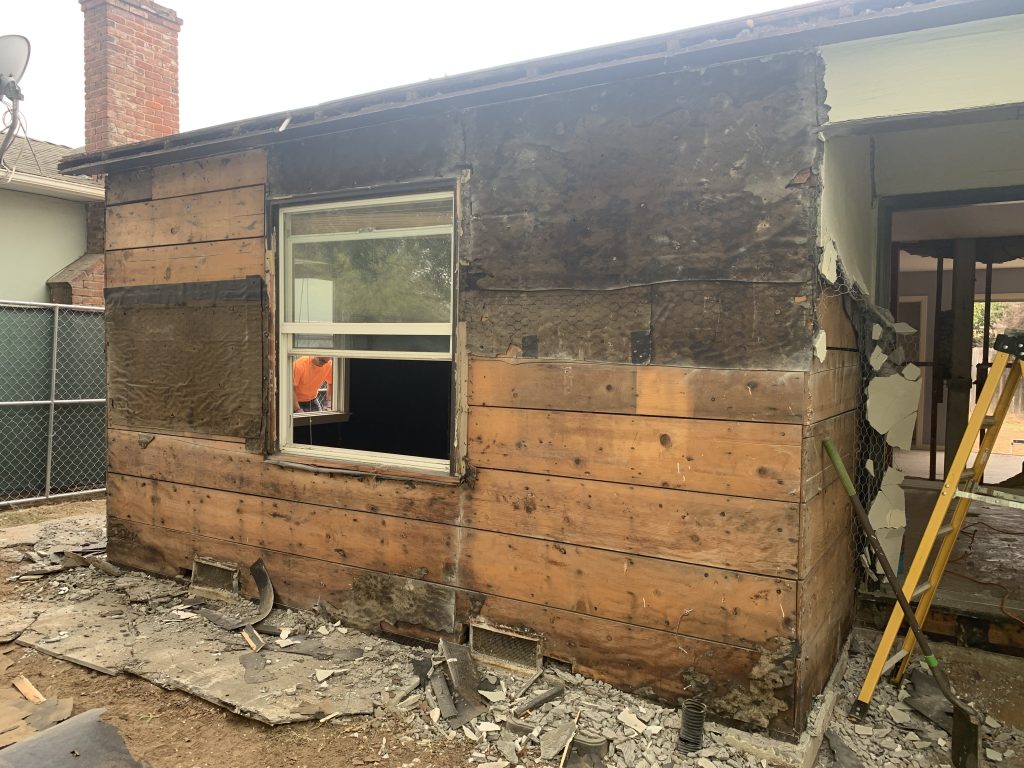
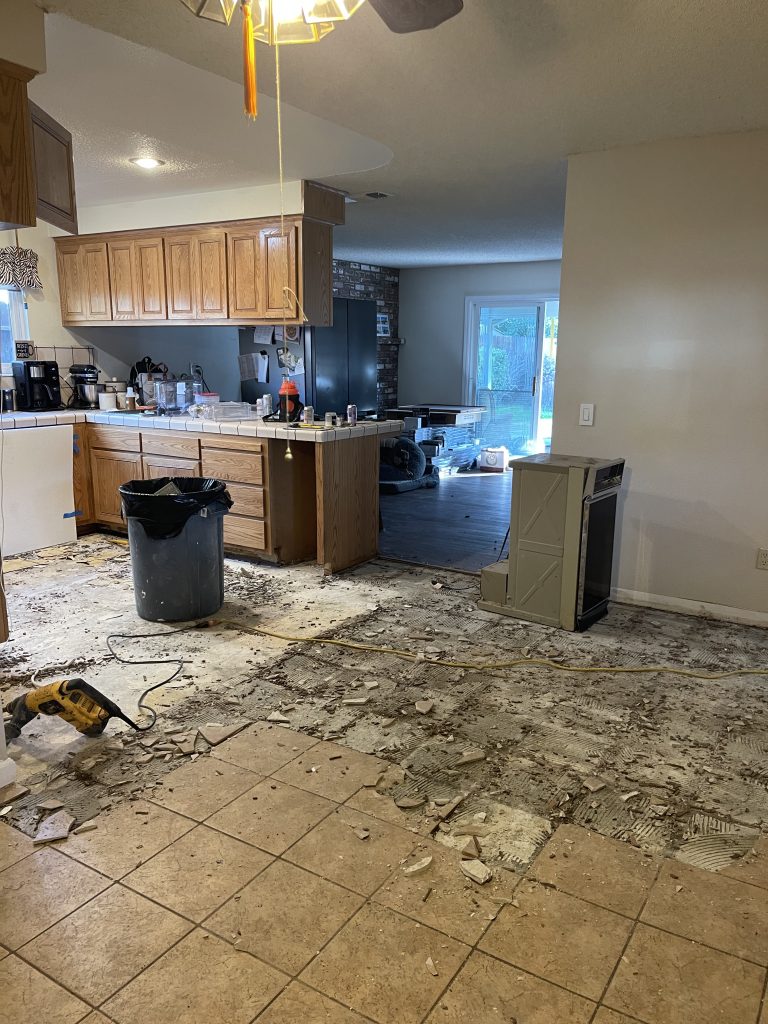
It’s noisy, dusty, and a little overwhelming at times, but don’t let the mess distract you from the excitement of progress. This is the moment where your vision starts to become reality, even if it currently looks more like a construction zone than your future dream space. You might feel a mix of excitement and apprehension as your home temporarily looks worse before it gets better—but that’s all part of the process.
Don’t forget to capture the moment! Take plenty of “before” pictures, not just of the space itself but also of the progress along the way. Snapping photos of the bare walls and exposed framework might seem strange now, but you’ll be amazed at how dramatic the transformation will be. Being able to look back at the starting point will make the final reveal even more satisfying.
Keep in mind that early construction often comes with a few surprises—unexpected wiring behind the walls, hidden water damage, or the occasional design adjustment. Stay flexible and trust your contractor to handle these bumps in the road. Remember, this phase is about laying the groundwork (literally) for the beautiful space that’s on its way. So, take a deep breath and embrace the chaos—it means you’re one step closer to the finish line!
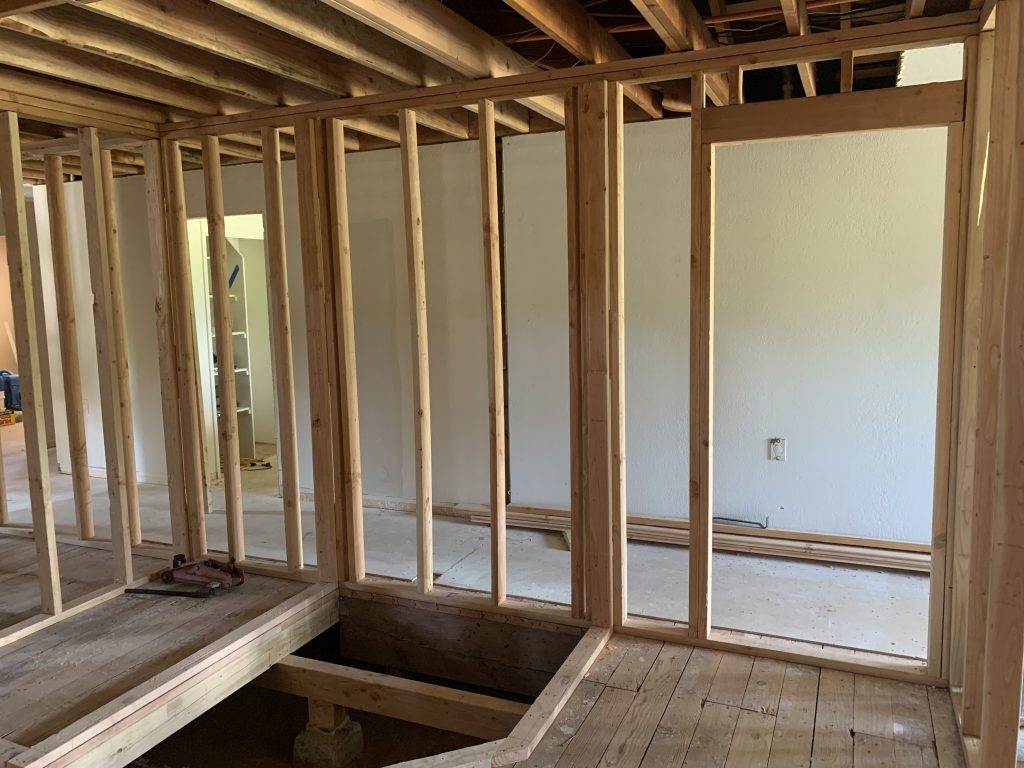
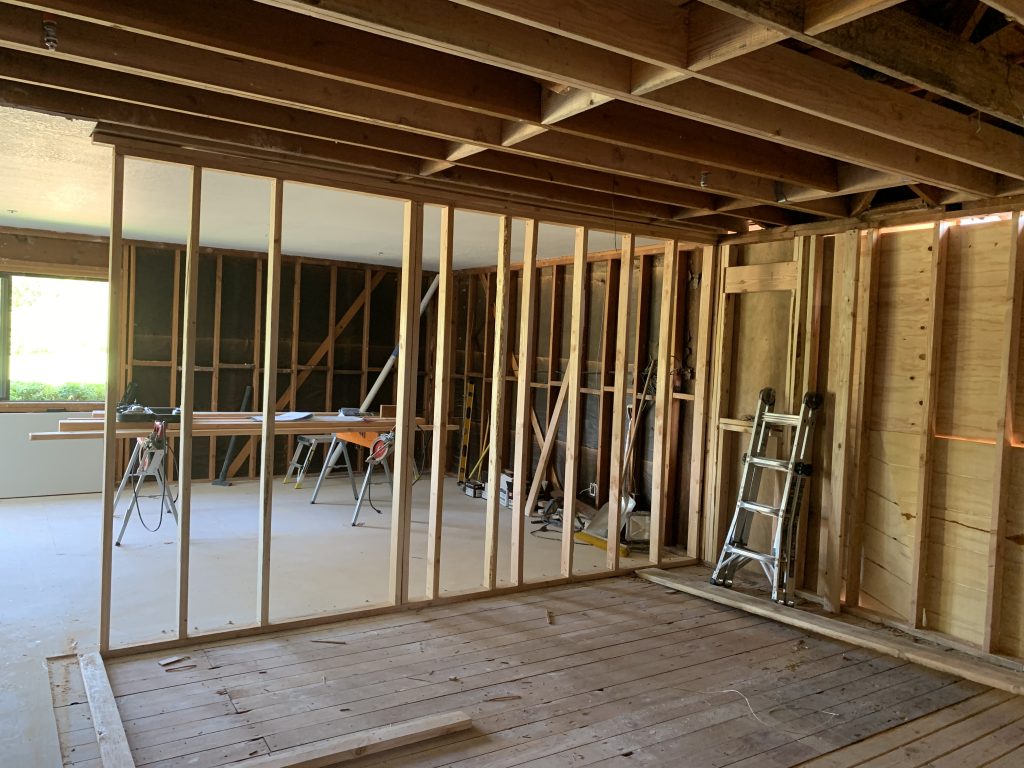
The framing and rough-in process might not be the most glamorous stage of construction, but it’s one of the most important. This is where the structural bones of your project are put in place, and all the behind-the-scenes systems—like plumbing, electrical, and HVAC—are carefully installed. Even though you may not see much visible progress, this stage is essential for making sure your home functions properly once everything is finished.
At this point, it might feel like the excitement of demolition has faded, and you’re left wondering why things seem to be moving so slowly. After all, pipes and wires don’t exactly give you that “wow” factor. But while it might look like nothing is changing, there’s actually a lot happening beneath the surface. The framing determines the shape and structure of your space, while the rough-ins ensure that water flows, lights switch on, and heating and cooling work seamlessly once everything is closed up.
Delays can be common during this phase, and they’re usually out of your control. Sometimes unexpected issues come up once the walls are opened—like outdated wiring, hidden water damage, or structural issues that need to be addressed before moving forward. On top of that, you might have to wait for an inspector to sign off on the work before the walls can be sealed back up. Waiting on approvals can be frustrating, but remember—it’s all about ensuring that everything is up to code and safe for the long haul.
It’s easy to feel like you’re in limbo during framing and rough-ins, but try to stay patient. This phase sets the foundation (literally and figuratively) for everything that follows. Once the walls are closed up and drywall goes in, the project will start to look more like an actual living space rather than a construction site. So, take a deep breath and trust the process—this behind-the-scenes work is what makes the final result not only beautiful but also functional and safe.
Then comes drywall—the phase where your project finally starts to feel like an actual room rather than just a skeleton of framing and exposed wires. Seeing the drywall go up is exciting because it gives your space definition, transforming it from an open framework into recognizable walls and ceilings. You can finally start to visualize how each room will flow and how the layout will come together. But while hanging drywall is a sign of progress, what comes next—drywall sanding—is arguably one of the hardest and most frustrating parts of the process.
Drywall sanding creates an incredible amount of fine dust that seems to find its way into every crack and crevice, no matter how well the space is sealed off. It settles on floors, countertops, and furniture, and even makes its way into rooms that aren’t part of the construction zone. If you’re living in the house during this stage, you’ll likely feel like you’re in a constant battle with the dust—and losing. Running an air purifier or sealing off vents can help, but some level of mess is unavoidable.
Living in a construction zone at this stage can be exhausting, especially if your kitchen, bathroom, or main living space is out of commission. Simple daily tasks like cooking, showering, or just relaxing can become a challenge when you’re surrounded by construction noise and dust. The lack of normalcy and the constant inconvenience can definitely wear on your patience.
But take heart—this messy phase is temporary, and it means you’re one step closer to the finish line. Once the drywall is up and sanded smooth, the space will really start to come together. You’ll be able to see the final shape of the rooms, and soon after, the fun part—like painting and installing fixtures—can begin. Keep your eyes on the prize and remind yourself that the discomfort now is laying the groundwork for the beautiful, functional space you’ve been dreaming about.
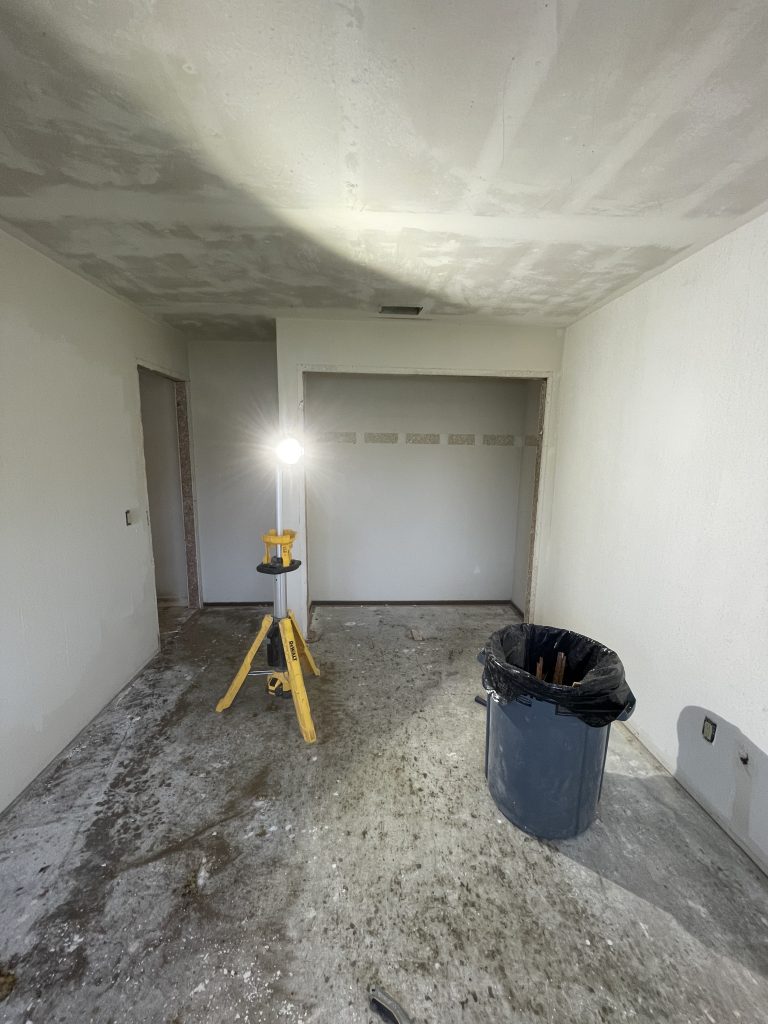
By the end of this phase, I’m sure the excitement of the remodel has faded, especially as the reality of living in a construction zone sets in. Your stress is probably at an all-time high if you’re trying to live without a kitchen or bathroom (or both!). On top of that, you have all the dust and noise wearing on your nerves.
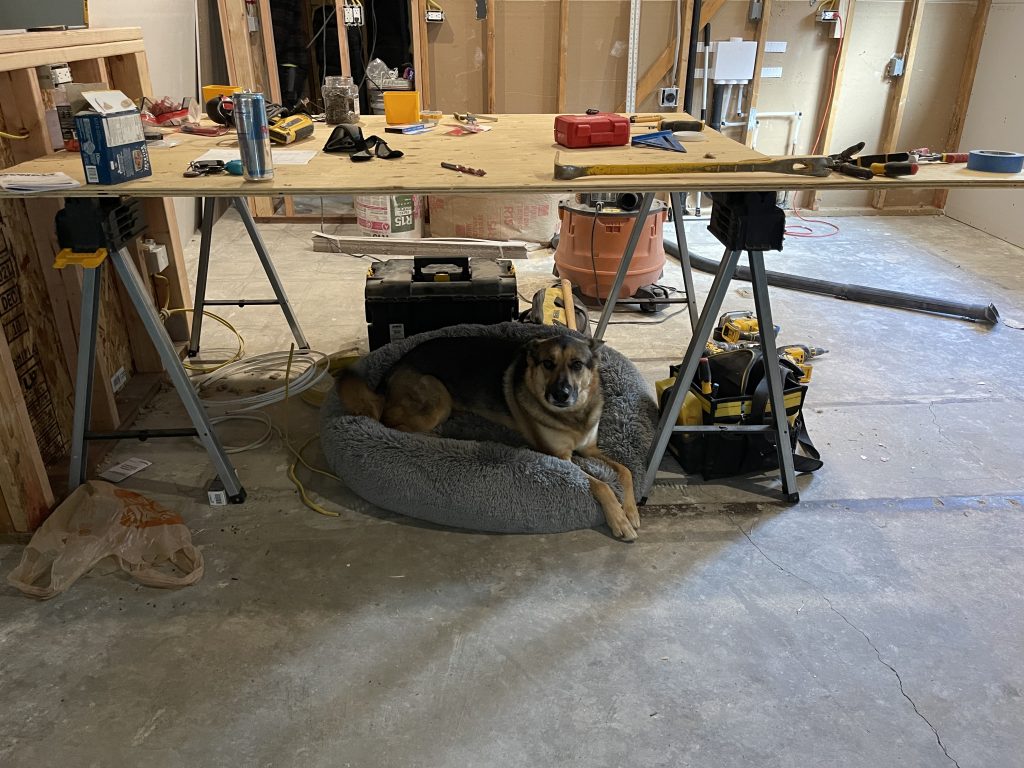
Phase 3 – Mid Construction
A Light at the End of the Tunnel
Now that the drywall is installed, you’re finally starting to see some exciting progress again! With the walls back up, your space is really beginning to resemble the home you’ve been imagining. The rooms feel defined, and you can better visualize how everything will come together. While this stage brings a sense of relief—especially after the chaos of demolition and the slow, behind-the-scenes work of framing and rough-ins—it’s important to remember that there’s still a lot left to do.
At this point, the focus shifts to the finer details that bring your space to life. Trim work, built-ins, and tile installation are all essential steps that require precision and care. These finishing touches might seem small, but they make a huge impact on the overall look and feel of your space. It’s tempting to rush through this stage because you’re so eager to reach the finish line, but patience is key. Each element takes time to get right, and the craftsmanship that goes into these details is what truly elevates your remodel.
It’s completely normal to feel torn between excitement and exhaustion during this phase. On one hand, you’re thrilled to see your vision coming together—but on the other, the constant presence of contractors, noise, and dust can start to wear you down. Living in a partially finished home is challenging, and the disruptions to your daily routine can make this phase feel like it’s dragging on forever.
When frustration creeps in, try to focus on the progress that’s being made. Each day brings you closer to completion, and every new detail—whether it’s freshly painted trim, installed cabinetry, or new tile work—adds to the transformation. Celebrate those milestones, no matter how small, to help keep your momentum and energy up.
Remember, you’re in the home stretch now! The hard work you’ve put in is paying off, and soon enough, you’ll be standing in the beautifully finished space you’ve been waiting for. Hang in there—it’s all coming together!

Phase 4 – Finishing Touches Begin
Renewed Energy
One of the most exciting turning points of any remodel is when installations begin! After weeks (or months) of dealing with dust, noise, and the not-so-glamorous parts of construction, this is when the space starts to feel like a home again. Suddenly, the empty, rough-looking rooms are being filled with the details that will define the final character of the space. Cabinets, vanities, flooring, and built-ins start going in, and with each addition, the space becomes more functional and polished.
Cabinet installation, in particular, feels like a major step forward. Seeing your kitchen or bathroom take shape with beautifully installed cabinetry and vanities makes the room feel more put together and gives you a glimpse of the finished product. Flooring installation also makes an immediate impact—it adds warmth and texture, tying the whole design together. Built-ins, like bookshelves or window seats, create a custom, high-end feel and bring a sense of personality to the space.
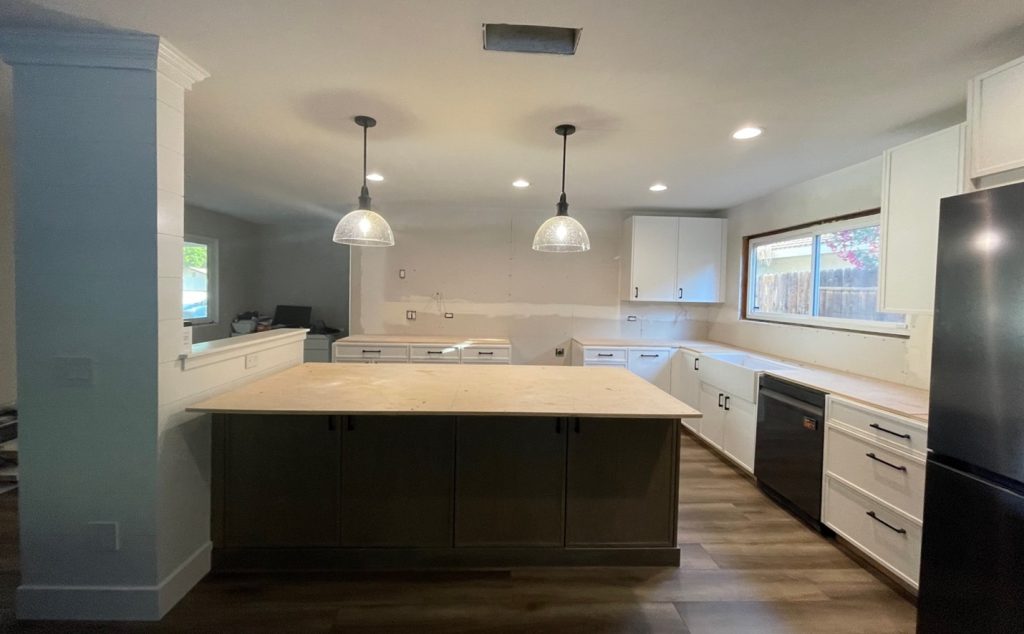
Tile work and painting often happen during this phase as well, and this is where the remodel really starts to reflect your unique style. A fresh coat of paint instantly brightens and defines the space, while carefully chosen tile patterns in the kitchen or bathroom add a layer of texture and interest. The backsplash in the kitchen or the shower tile in the bathroom serves as a focal point and a reflection of your personal taste.
Fixture installation is another big moment. Seeing light fixtures, faucets, and cabinet hardware go in makes the space feel even more finished. Suddenly, the room isn’t just a construction zone—it’s becoming a functional, stylish living space. The small details, like the sheen of a brushed gold faucet or the soft glow of new pendant lights, give the space personality and make it feel truly yours.
By this point, the end is in sight, but it’s not without a few lingering inconveniences. There might still be touch-ups to handle, delayed hardware deliveries, or a few finishing adjustments that need to be made. Maybe a cabinet door arrived damaged, or the grout color needs tweaking—but these are minor compared to the heavy lifting that’s already been done.
The excitement is back in full force as you watch the space come together piece by piece. You’re no longer just imagining how it’s going to look—you can actually see it. Every new element adds another layer of completeness, and you’re finally able to visualize how the finished space will look and feel. After weeks of hard work and patience, you’re in the home stretch, and the sense of satisfaction is growing by the day. The finish line is right there—you’ve almost made it!

Phase 5 – The Last Details & Completion
The Final Stretch!
At this stage, everything is coming together, and you might find yourself wondering—what’s taking so long? The big, dramatic changes are already done, so why does it feel like progress has slowed down? Now it’s all about the finishing touches: countertops, plumbing and electrical hookups, hardware installation, and those last, frustrating little details that seem to take forever. It might feel like small things, but these are the elements that give the space its final polish and make all the difference in how the finished product looks and functions.
Countertop installation is a major milestone. Once the countertops are in, the kitchen or bathroom feels much more complete, and you can start imagining how you’ll actually use the space. The plumbing and electrical hookups that follow bring even more functionality—being able to turn on a faucet or test out your new light fixtures makes the space feel truly livable. These are the moments where the project starts to shift from “under construction” to “ready to use.”
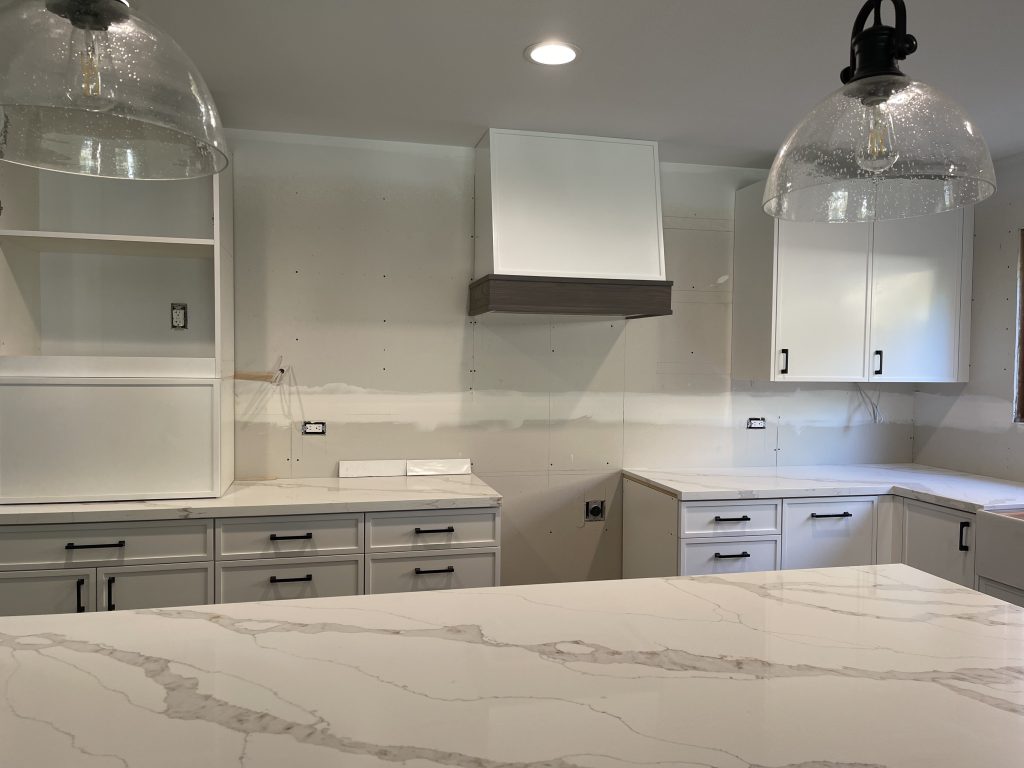
But as exciting as it is, this phase can also be the most frustrating. Small adjustments like fixing uneven cabinet doors, touching up paint scuffs, or adjusting a misaligned drawer might seem minor, but they’re essential for achieving that flawless, professional finish. It’s easy to grow impatient at this point because you’re so close to being done, but these finishing touches are what elevate the space from good to great.
This is also when your contractor might do a final walkthrough to create a “punch list”—a list of small fixes and adjustments that need to be addressed before the project can officially be considered finished. Maybe there’s a bit of uneven caulking around the backsplash, or a door needs to be realigned. It’s completely normal for these small imperfections to surface at the end, and it’s better to address them now than to notice them after you’ve settled in.
The anticipation is real at this stage. You can see the finish line, and you’re ready to move back into the space and start using it. The vision you’ve been carrying in your head for months is nearly a reality, and that mix of excitement and impatience is completely natural. Try to stay patient—this is the home stretch, and these last adjustments are what will make the space feel truly finished. After all the hard work, you deserve a flawless result, and these final details are what make the difference between “almost done” and “absolutely perfect.”
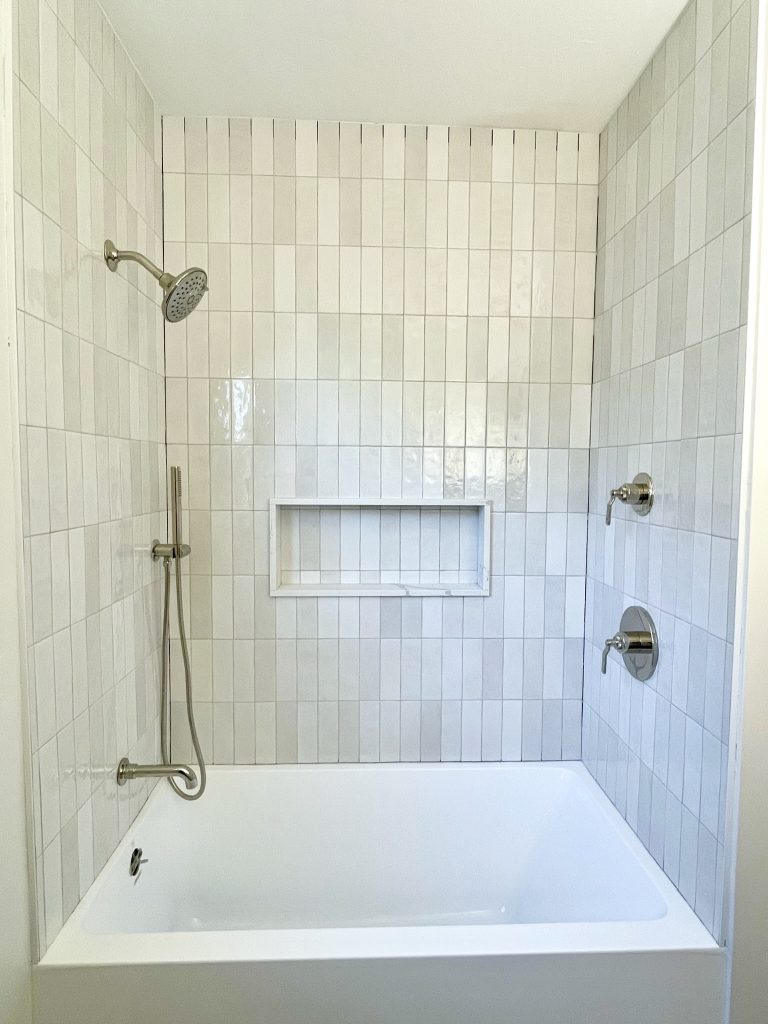
Phase 6 – Completion
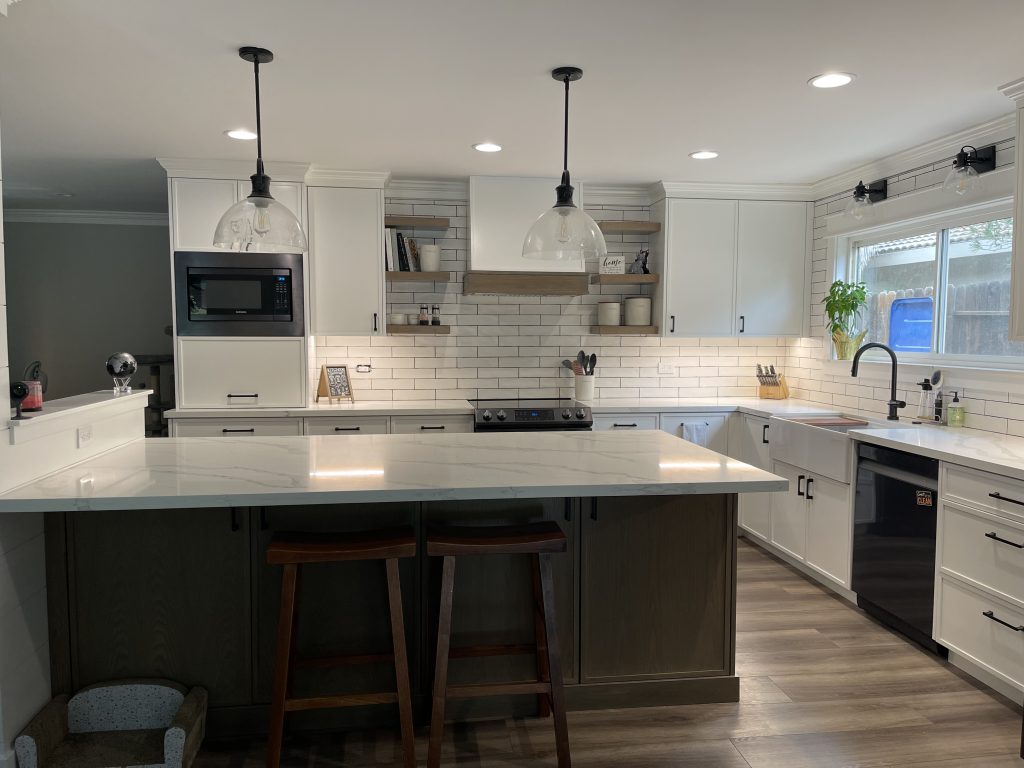
Embracing the Process
Then, before you know it, the big moment has finally arrived—your project is done! Now it’s time to really appreciate the transformation. One last step, make sure you do a final walkthrough with your contractor to make sure everything meets your expectations. Then, you can finally enjoy your beautiful new space!
Remodeling is an emotional journey, filled with highs and lows. By preparing for the roller coaster, you can better navigate challenges and stay focused on the big picture. Trust the process, communicate with your contractor, and remind yourself that the temporary stress will be worth it when you’re finally enjoying your dream home!


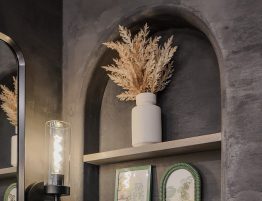
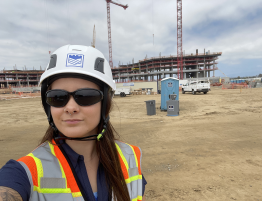

Write a comment: